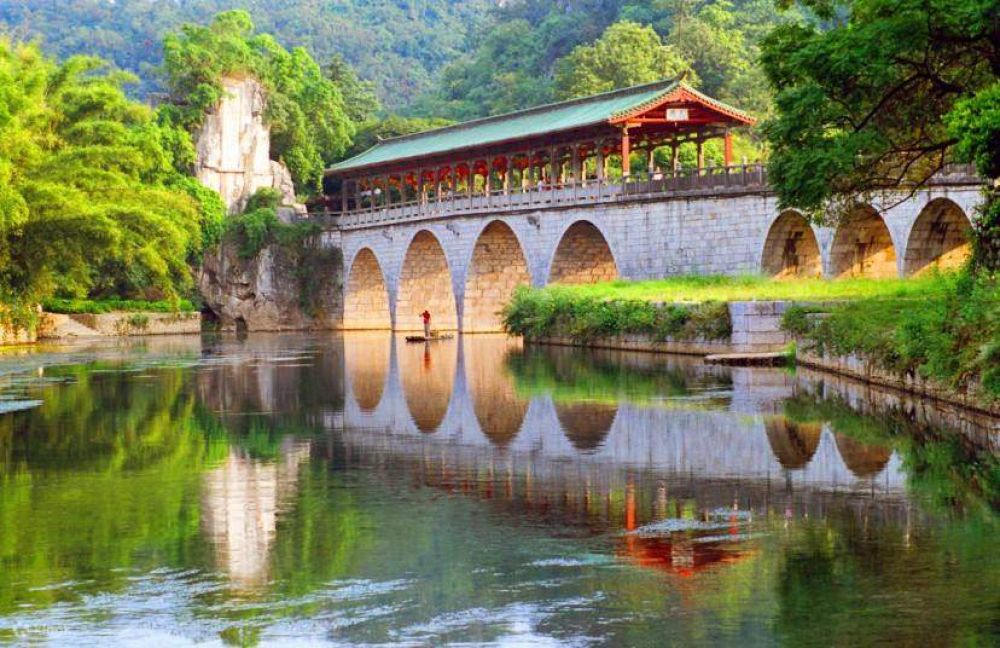

The Seven Star Park (Qixing Gongyuan), located on the eastern side of the Li River in the city of Guilin, has a long history that dates back to the Sui and Tang Dynains (581-907 A.D.) but it was during the Ming Dynasty (1368-1644) that it gained significant recognition. The name of the park comes from the seven peaks that resemble the pattern of the Big Dipper constellation. It is the largest and one of the most scenic parks of Guilin and has been an essential stop for tourists in the region.
Historical records suggest that tourism in the area started to flourish during the Song Dynasty (960-1279), as poets and artists began to celebrate the natural beauty of Guilin in their works, thereby attracting visitors from all over China. By the time of the Ming and Qing Dynasties (1368-1912), Guilin had established itself as a cultural hub, with the Seven Star Park being a focal point for those wishing to experience its famous karst landscape.
In modern times, after the establishment of the People's Republic of China in 1949, the Chinese government recognized the potential of the park and began to develop it for tourism. The park was officially opened to the public in 1960 and has since become a prominent symbol of Guilin's tourism industry.
Throughout the years, the park has seen a steady increase in visitors, both domestic and international. It gained further prominence after China's reform and opening-up policy in the late 1970s, which brought a surge in foreign tourists. The park is famous for its remarkable scenery, stone carvings, elegant gardens, and historical monuments such as the Seven-Star Cave and Camel Hill.
In recent years, the latest tourism trends have seen Guilin and Seven Star Park adapt to a more sustainable and eco-friendly approach. Efforts are being made to protect the natural environment while providing tourists with an unforgettable experience. This includes improved conservation measures and the introduction of eco-friendly tourism activities.
Today, Seven Star Park is not just a testament to China's rich history but also to its ongoing commitment to preserving and showcasing its natural beauty to the world. As travel preferences evolve in the post-COVID era, the park continues to evolve, offering a blend of outdoor adventures, cultural immersion, and opportunities for tranquil reflection, to cater to the varied tastes of tourists from across the globe.